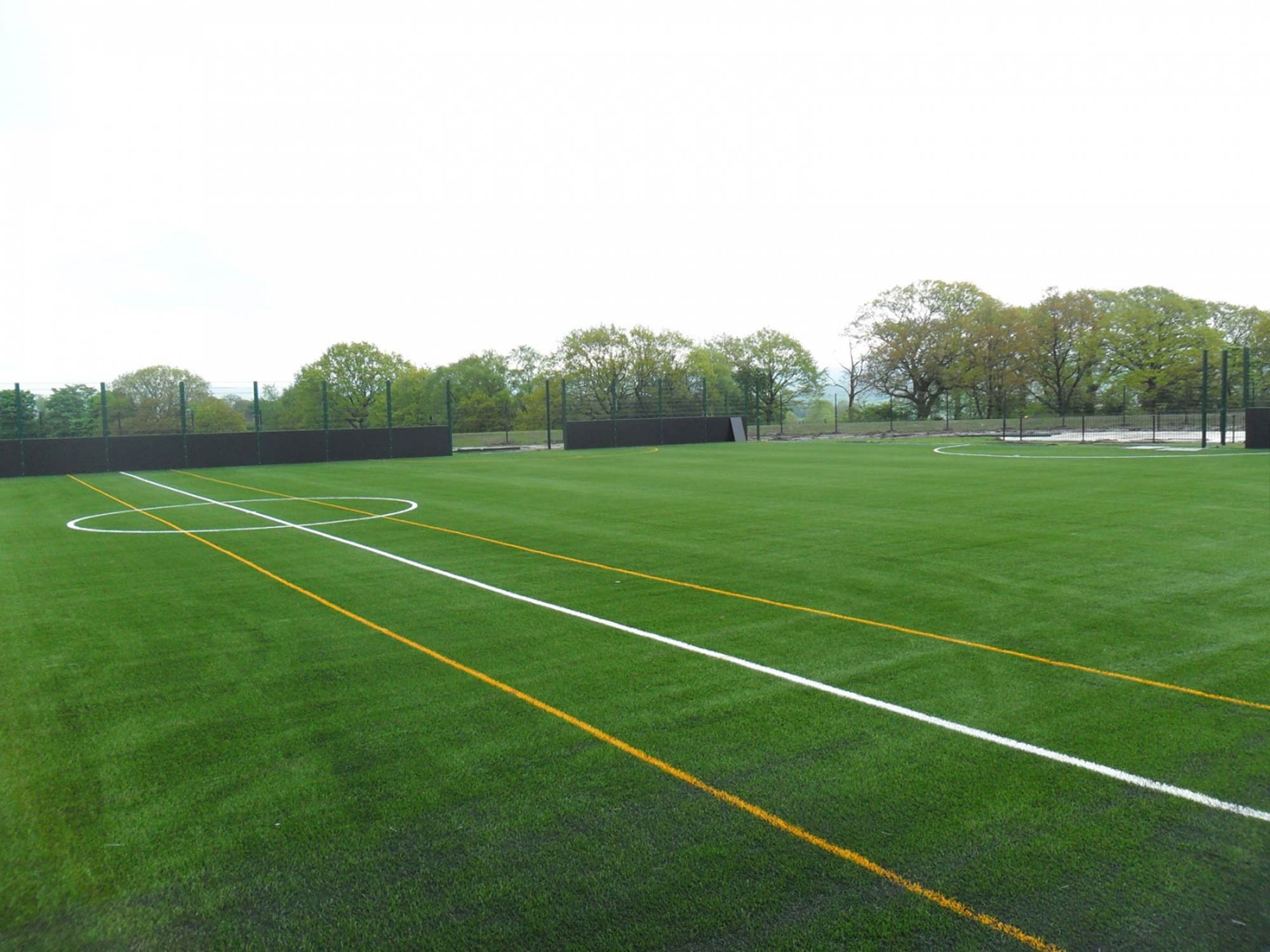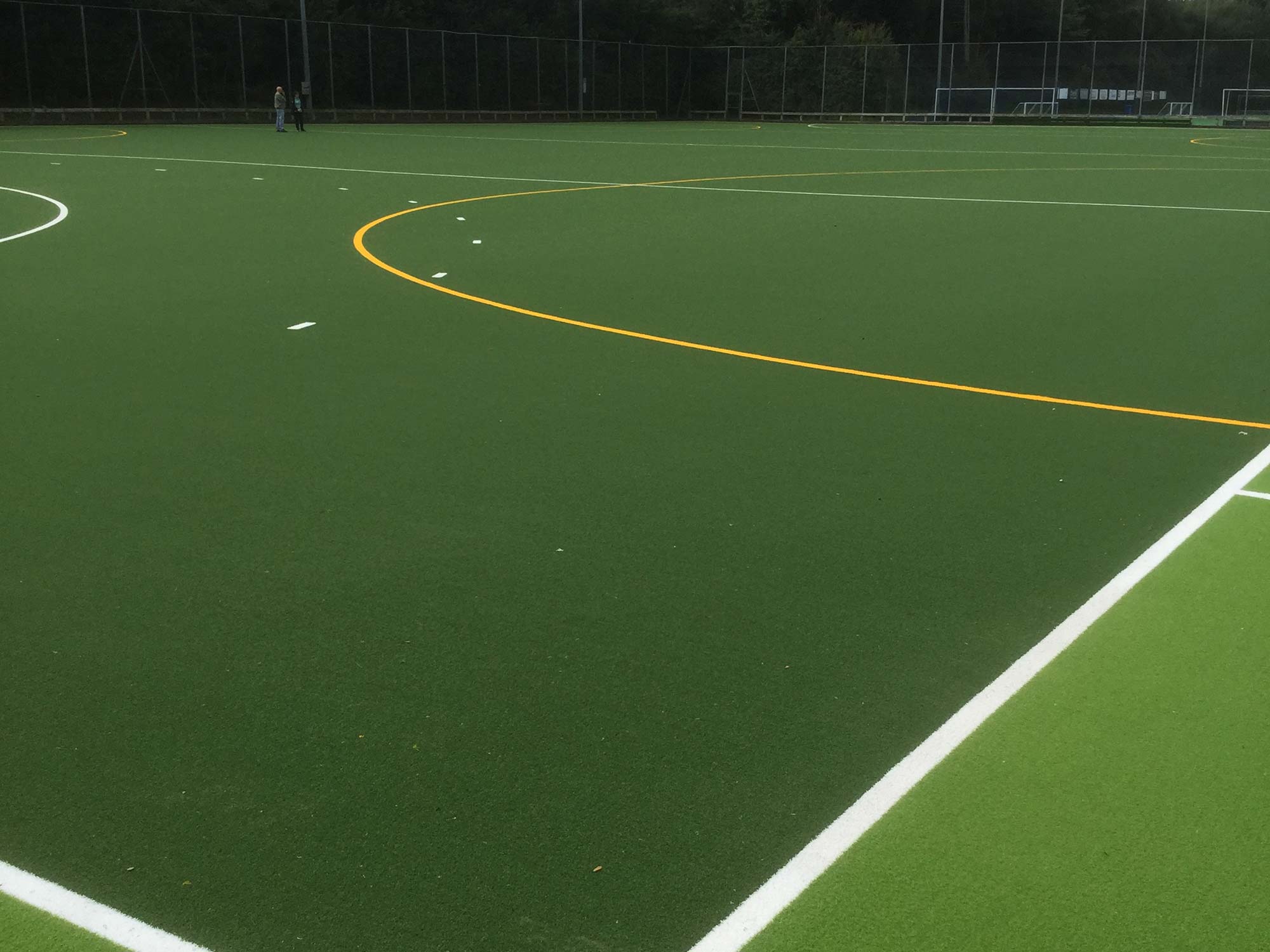
Synthetic Sports Surfaces
Our Construction Experience
Fineturf can assist with every aspect of the construction of synthetic sports surfaces. Working with world-leading synthetic surface manufacturers, our in-house expertise spans design and specification, groundworks, construction, installation, resurfacing and upgrading, as well as supplying extras such as fencing, floodlighting and peripheral landscaping.
We have an in-house team dedicated to synthetic sports surfaces and fully-owned plant and equipment that runs in parallel with our natural sports pitch construction services. Our clients include professional sports clubs and venues, non-league and community clubs, local authorities, universities, schools and academies.
If you're considering applying for funding or grants for a new synthetic surfaces project, please get in touch so that we can signpost you to current design guidance and potential funding streams.
Please contact us if you like to speak to one of our synthetic sports surface specialists.
Types of Synthetic Sports Surface
4G Surfaces
Fourth Generation (4G) synthetic turf has a shorter denser pile, 32-38mm, that does not require sand or rubber crumb infill. 4G surfaces are normally installed over a shock absorbent pad and are ideal for football and multi-use activity. 4G surfaces are ideally suited for indoor use.
3G Surfaces
Third Generation (3G) surfaces have a longer pile, 40mm-60mm in height, and combine synthetic turf, sand and SBR rubber infill. With an underlying shock absorbent pad, 3G systems meet the performance and testing criteria set by governing bodies including FIFA, World Rugby, the RFU and RFL. 3G surfaces can also be installed using alternative infill materials to rubber including cork, organic infill and TPE (Thermoplastic Elastomers).
2G Surfaces
Second Generation (2G) surfaces that combine synthetic turf and sand infill are ideal for hockey, tennis and amateur, five-a-side or seven-a side football. A shock absorbent pad may be required to meet criteria set by relevant sports' governing bodies for performance and testing. Sand-dressed or sand-filled, 2G surface pile is shorter, typically 15mm-24mm in height.
Artificial Football and Rugby Pitches
To provide a superior playing experience for football and rugby, 3G pitches meet stringent testing criteria required by the FIFA Quality Programme www.fifa.com, World Rugby www.world.rugby, RFU www.englandrugby.com and RFL www.rugby-league.com.
FIFA's Quality Programme has quality requirements necessary for football in terms of playing performance, safety, durability and quality assurance. FIFA awards the FIFA QUALITY mark to football pitches that meet the standard for community and amateur pitches, and the FIFA QUALITY PRO mark to pitches that provide the very best playing performance for professional-level football.
The importance of the surface system is considered more critical for rugby, with stringent health and safety requirements for meeting Head Impact Criteria (HIC).
Artificial Hockey Pitch Construction and Refurbishment
Different surface options are available for hockey pitches and to comply with Federation of International Hockey (FIH) www.fih.ch standards.
- Sand filled - a hardwearing turf surface of tufted synthetic material with a sand infill.
- Sand dressed - a surface of tufted synthetic yarn with a higher density when compared to a sand-filled carpet, incorporating sand infill with a lower overall pile height carpet.
- Water based - designed for elite standard hockey, this dense, tufted, synthetic short pile carpet is water retentive and designed to be irrigated prior to use, and during play, at half-time.
Artificial Tennis Courts
Artificial tennis courts are designed to replicate the playing characteristics of natural grass courts and can be played year-round, even after rainfall. Ideally suited for public courts, clubs, schools, leisure centres and private estates. They are suitable for indoor use and can be installed in shaded areas where natural turf may struggle to grow, with pile height of the surface determining the speed of play and preferred style of game.
Macadam tennis courts are coated in polyurethane paint to ensure that they meet the LTA www.lta.org.uk and ITF slip-rating standards www.itftennis.com.
MUGA - Synthetic Multi Use Games Area Surface
A Multi Use Games Area (MUGA) is a highly durable synthetic surface catering for different sports and activities and intensive use.
Macadam, polymeric or synthetic grass MUGA surfaces, together with in-situ or preformed shock pad systems, are available in a range of specifications that meet the different performance standards including Sport England guidelines. www.sportengland.org.
Macadam MUGA
Available in Type 1 and Type 2 specifications - offering higher slip resistance and therefore more suitable for sports such as netball and tennis.
Polymeric MUGA
A composite of rubber granules bound by polyurethane and sprayed with a high-traction, coloured top-coat. Laid onto a solid tarmac base and used for athletics, running tracks, tennis, netball and basketball courts, multi-use games areas. Type 3 and Type 4 polymeric surfaces are slip resistant so suitable for netball and football. The rubber granulate base mat absorbs impact and protects players' knees and ankles from long term injury.
Synthetic Grass MUGA
A durable artificial grass, rubber-filled 3G, or non-filled 4G, system is better suited to football and rugby while Type 5 MUGA's are suitable for hockey, tennis, football, basketball, netball, badminton and general recreational areas. Type 5a is sand-filled and 5b is sand-dressed; a denser turf, requiring less sand, and offering better ball bounce for sports including hockey and tennis.
Athletics - Synthetic Running Track Surfaces
A wide range of synthetic athletic track surfacing systems are available, with choice dependent on the performance level and anticipated usage patterns. Running tracks are provided for daily training, for local, regional competitions or at a national, elite level with requirements to comply with criteria set by World Athletics www.worldathletics.org.
Porous Tracks
The majority of athletics or 400m running tracks in the UK are porous. Ideal for local clubs, schools and universities, the softer surface reduces risk of injury. Installation is a two-layer process with a black rubber granule base mat and a second layer, a structural, coloured spray coat of EPDM granules and polyurethane.
Sandwich Tracks
Impermeable sandwich tracks are a more cost-effective option for regional competition use, combining a rubber granulate base mat (as used in porous track systems) with a synthetic flood coat topping consisting of liquid polyurethane and embedded EPDM rubber granules.
Solid Tracks
A harder, impermeable multi-layered 'full pour' liquid polyurethane surface, designed and engineered for faster performances at elite level. The polyurethane base layers are embedded with EPDM or SBR rubber granulate with the final layer finished with EPDM rubber granulate embedded into the liquid polyurethane prior to curing.
Pre-fabricated Tracks
Prefabricated tracks are suitable for elite level and international events. Manufactured in sheet sections of rubber-based matting provide a consistent depth and controlled performance characteristics in line with World Athletics performance requirements.
Athletics Track Resurfacing
To maintain athletics and running tracks in optimum condition, cleaning, repairing, resurfacing and re-marking of tracks will be required over time.
Maintenance and Warranties
All installed surfaces come with a full manufacturer's warranty. On completion, we also offer;
- Maintenance and aftercare advice for all elements of installation that require regular attention.
- Help and advice with the sourcing and supply of any maintenance equipment required.
- More specialised maintenance visits, if required, to supplement any in-house maintenance regimes.












